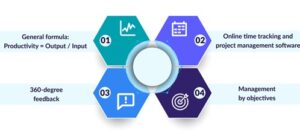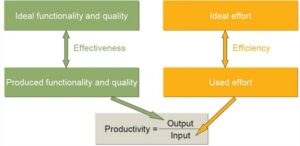High-quality application support is an ongoing process that requires more than identifying and resolving issues. This blog will go over how to establish and maintain a good application support system from the start.
What is high-quality application support, and how can you ensure it?
Quality standards are documents that include rules, specifications, guidelines, or characteristics that may be applied regularly to guarantee that Improves products, processes, and services are fit for purpose. Standards offer businesses with the agreed vision, understanding, processes, and terminology required to achieve their stakeholders’ expectations.

- Customer Focus: Customer focus is a business strategy that centers all business growth and management choices on the customer.
- Leadership: Leadership is a critical management role that directs an organization’s resources for increased efficiency and goal attainment.
- Engagement of People: Employee engagement refers to a worker’s excitement and attention to their job.
- Process approach: The process approach is a way of thinking about and planning the sequence and interactions of processes in a system. Measurement, monitoring, reviews, audits, and performance analysis are some examples.
- Improvement: Continuous improvement is crucial because it ensures that we are doing things in the most efficient, effective, and productive way possible.
- Evidence based decision making: Evidence-based decision making is a process that uses available evidence to make the best judgments feasible.
- Relationship management: Relationship management is a technique in which a company maintains a consistent degree of engagement with its target audience.
Measuring Productivity
Without accurately assessing productivity, no quality application support can be provided. Productivity software is a type of software that assists users in creating documents, databases, graphs, workbooks, and presentations. Many productivity tools are designed for use in the workplace.
How to Calculate/Determine Productivity

- General Formula: Productivity = Output / Input
The effort / size formula is used to calculate productivity. It’s worth noting that there are several approaches for determining the size of a support. Each has its own distinct characteristics. Productivity, on the other hand, is merely one facet of service delivery. Speed to market, quality, employee retention, and cost are all critical considerations. They must be measured as part of a benchmarking programmed in order to evaluate performance.

- Online time tracking and project management software
Technology has advanced to the point where you can measure staff productivity at a glance and at any time. This is useful in workplaces where timesheets are employed, as well as in any function that needs online work (e.g., EBS is online time tracking software). It is critical to track the time that corresponds to the stages you wish to include in your productivity measurement.

- 360-Degree Assessment and Performance Feedback
Another effective method for determining productivity is to solicit input from co-workers. 360-degree feedback seeks feedback from people above and below you, as well as any essential stakeholders, to ensure it is comprehensive.
It’s a useful metric for determining how well an employee is functioning and whether or not their goals are being met as observed by people around them. This works well in a setting where there is a lot of communication and regular cooperation.

- Management by objectives
This is a strategy in which the goals of an employee are clearly specified, and the resources required to attain those goals are supplied. For example, if the aim is to grow sales by 50%, then the required tools, such as technology, training, incentives, and so on, must be offered.
Regular check-ins will offer a clear knowledge of the obstacles to reaching these goals, as well as how they are tracked. Bi-monthly, quarterly, and mid-year evaluations are also helpful in tracking how effectively staff are fulfilling goals.
Measuring Quality
The criteria for measuring application support quality can be somewhat complex, however there are eight key aspects to consider:
Code quality Performance Security Usability
![]()
![]()
![]()
![]()
Reliability Correctness Maintainability Integrity
![]()
![]()
![]()
![]()
Code Quality: These metrics assess how easy the code is to read and understand, as well as whether it adheres to coding standards.
Performance: Performance measurements assess if a product achieves its goal and performs as expected. It also includes the application’s resource use, scalability, customer satisfaction, and response times.
Security: Software security metrics assess a software program’s intrinsic safety and verify that no unauthorised alterations are made to the product before it is delivered to the customer.
Usability: Because all software products are designed for end users, usability is a key quality criterion. We also make certain that the client is satisfied with the features and functionality.
Reliability: Reliability metrics describe the software’s dependability under various scenarios. The software’s ability to give precise service at the appropriate moment is tested.
Correctness: Correctness is an essential software quality statistic since it determines if a system or programme is operating correctly and without errors while also pleasing the user.
Maintainability: Software products must be maintained and upgraded on a regular basis. Maintenance is a time-consuming and costly operation. Time required to adapt to new features/functionality is included in the maintainability metrics..
Integrity: Software integrity is significant in terms of how simple it is to connect with other needed software, increasing software capability, and what controls are in place to prevent illegal software from being integrated, increasing the risk of cyberattacks.
Conclusion: An application support engineer (ASE) is an IT professional who is responsible for troubleshooting the software applications a company uses and ensuring that help desk tickets are resolved in a timely fashion.
About the author:
Rakesh Gavel is a Senior Technical Consultant at Perficient, where he works in the MSO department to effectively support several L1 and L2 projects. Excited about always being ready to assist colleagues and juniors. His ability is being shared through his blog.




Very insightful!
Great blog!